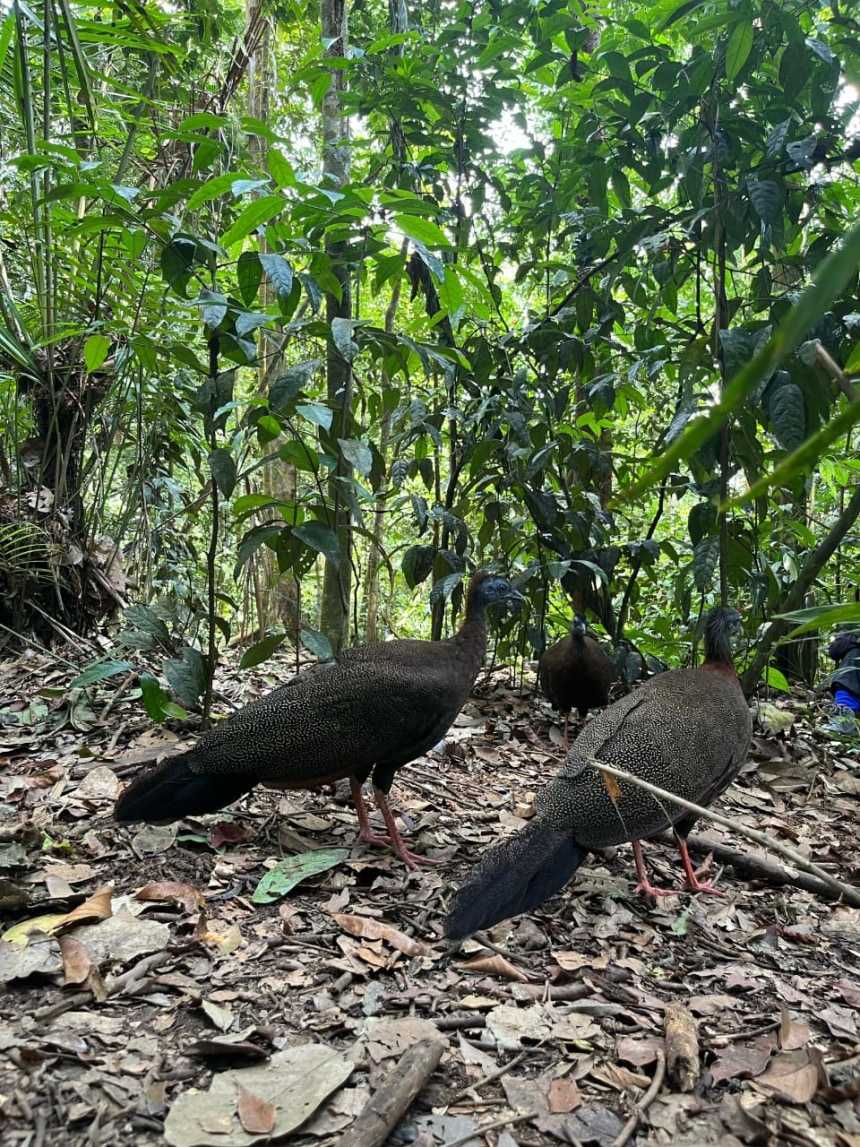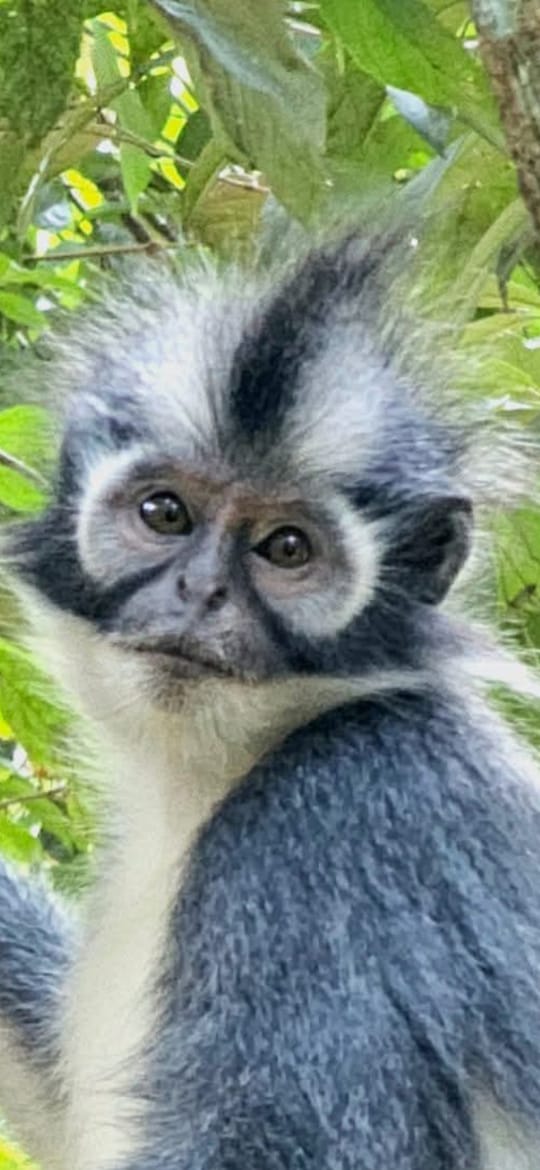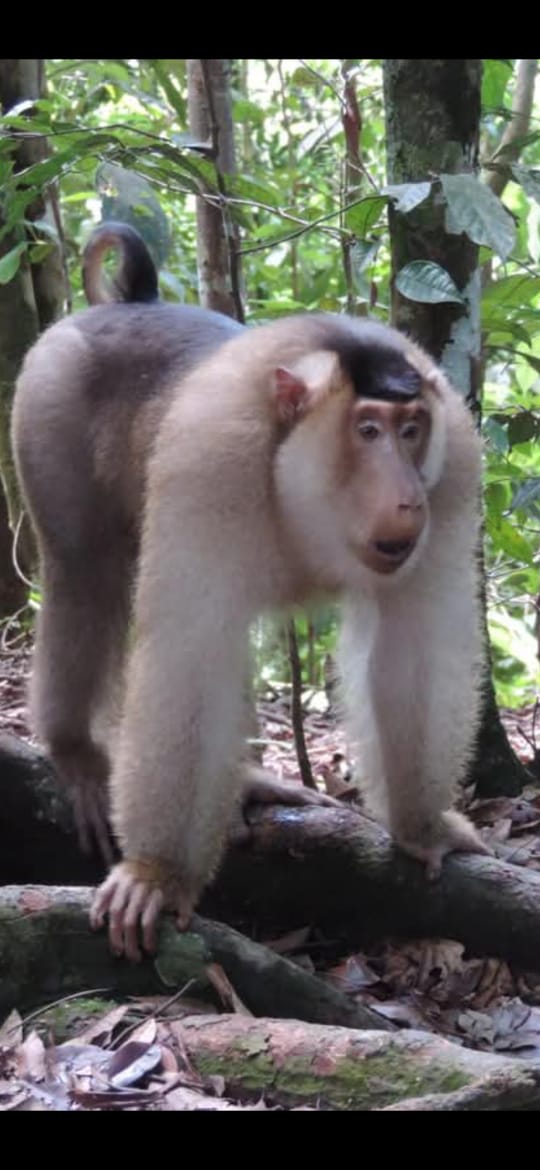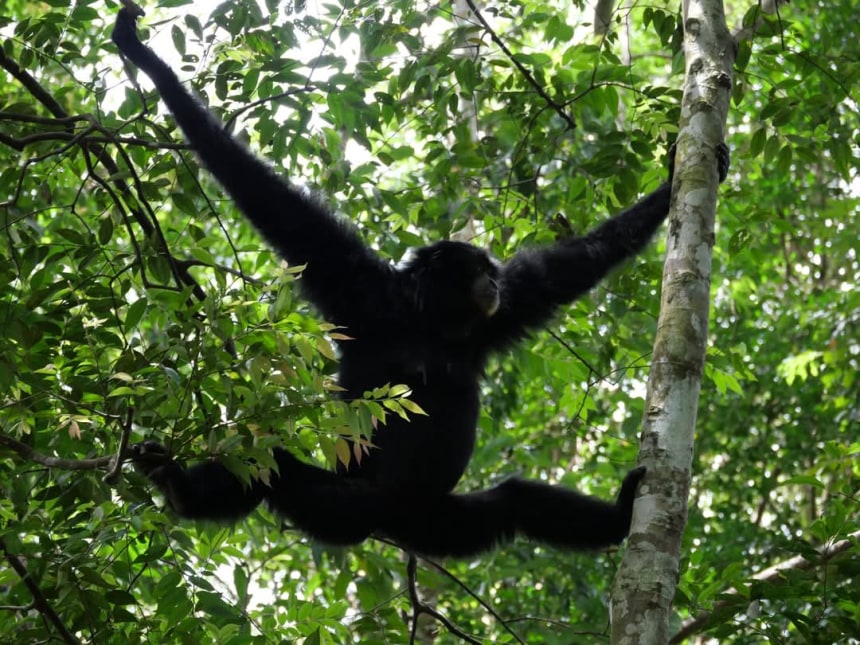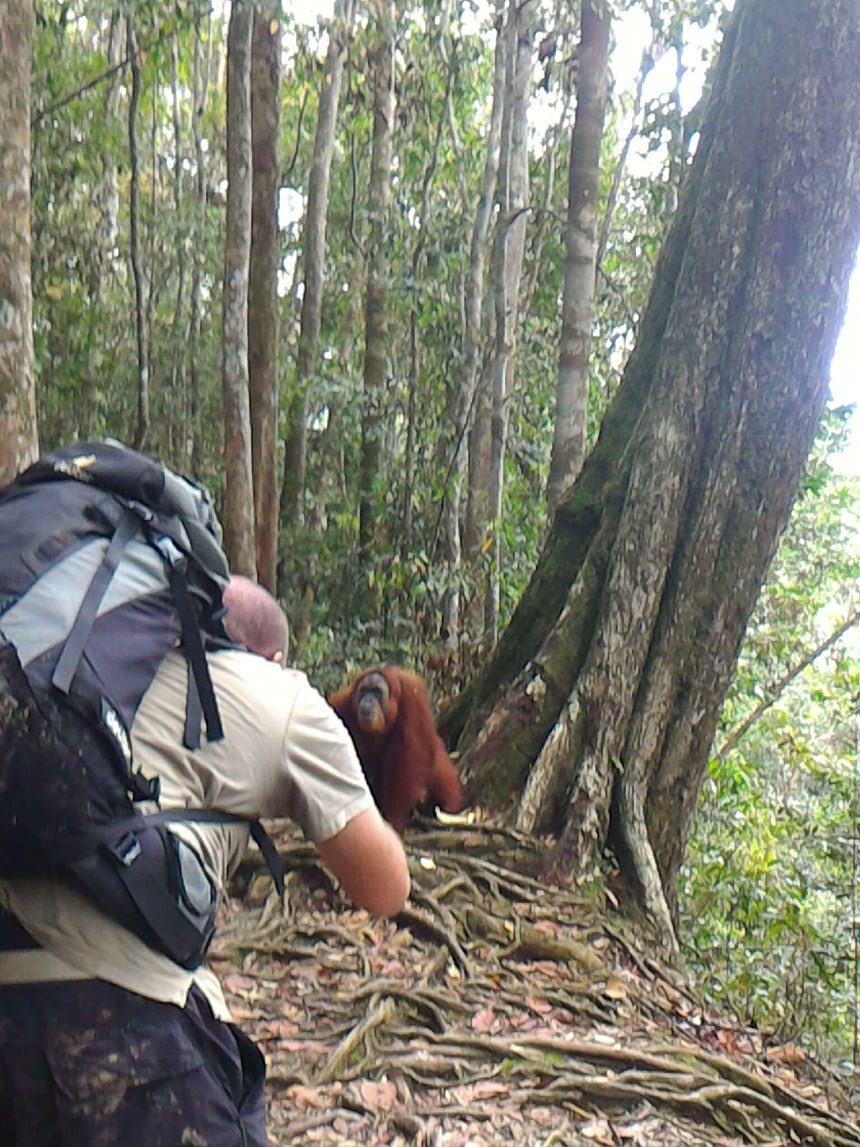
Bukit Lawang orangutan rehabilitation center was set up in 1973. The purpose of the center was to
rehabilitate orangutans released from captivity. The rangers at the center train the orangutan all the necessary skills to survive in the wild. After an intense period of quarantine, readjustment to the natural habitat and reintegration in the (semi) wild population, the orangutan is released back into the jungle. All orangutans released are still monitored by the rangers and they still provide them with supplementary food at the feeding platform until they become fully self reliant.
Bukit Lawang is a village's name located in the West side of North Sumatra Province about 90km away from Medan (4th biggest city in Indonesia) the Capital City of North Sumatra. Situated on the edge of Gunung Leuser National Park. "Gunung" means "Mountain", "Bukit" means "Hill" and Lawang" means "Door" or "Gate". So Bukit Lawang Means "Gate of the Hill"
Mount Leuser National Park
Covering upto a million (1.049.962) hectares of Gunung Leuser National Park, straddling the border of NorthSumatra and Aceh province. Its named after Mount Leuser (3119 m above sea level), this magnificent rainforest of the park have become famous in the world as home for some of the most endan
gered and rare species on earth for example Sumatran Rhinoceros, Oranguta
ns, Tigers, Elephants and Raffles - the largest flower in the world, together with Kerinci Seblat and Mount Barisan Selatan National park it forms the world's most important biologically diverse conservation areas, the tropical rainforest heritage of Sumatra.
The park is inhabited by many species of primates one of which is "Siamang"Lar Gibbon, White-handed Gibbon, Common Gibbon (Hylobates lar) which has an impressive,
far-reaching vocal display. The Agile pretty faceThomas Leaf-Monkey, Pig & Long Tailed Macaques are also commonly see. In total of 285 species of birds, 90 of mammals, reptiles and 35 of Amphibians. The park's flora contains 3500 plants species and on each hectare of the lowland forest you can find amazing 60-130 tree species.
Geologically there are several limestone formation along the foothills of the mountains, some with the beautiful caves. Long ago these were coral reefs which have since been uplifted from the sea at rate of few millimetres per year by the process of colliding ocean floors and drifting continents. These infinitely slow collision and the enormous forces involved have led to the formation of high mountain and volcanic zones about 1800 years ago, during glacial times. The peaks of the Gunung Leuser National Park and others mountains nearby, were still covered by glaciers snow and ice. Sea level at that time was more than 80m lower than present time and the islands of Sumatra, Java, and Borneo then formed to huge land mass which was connected via Malaysia to the Asian mainland.
Recovered from Disaster in 2003
Big flood hit Bukit Lawang on November 3rd, 2003. Witnesses describe it as a tidal wave, the water was about 20 metres high, as it came crashing down the hills, wiping out everything on its way. The disaster, which was the result of illegal logging, destroyed the local tourist resorts and had a devastating impact to the local tourism industry. Around 400 houses, 3 mosques, 8 bridges, 280 kiosks and food stalls, 35 inns and guest houses were destroyed by the flood, and 239 peoples (less than 10 tourists) were killed and around 1,400 peoples lost their homes. After less than a year of rebuilding, Bukit Lawang was re-opened around July 2004.
For many villagers the trauma of losing family, friends, and homes has taken a long time to deal with. The people were facing unemployment and homelessness. It has been a long road to fully recovered and an especially hard task to rebuild a town with only limited financial assistance from the government. However the people in Bukit Lawang are survivors and the new village is taking shape and more and more businesses are opening again. Especially the young generation is hoping to rebuild the village in more sustainable way than before and they are very aware of the importance of preservation of the fragile eco system they live in. They can use all the support they can get and the income of tourism will help them in realizing their ideas for a brighter future for Bukit Lawang.
How to get there
Regular bus from/to Medan is leaving every hours. When you arrive at the airport walk outside and follow the signs taxi and buses. From the taxi stand outside turn right for the DAMRI bus which will drop you to AMPLAS. Cost around Rp 25.000,- per seat.
From AMPLAS arrange for a Cab/Angkot to Pinang Baris Bus terminal. Cost will be something in between Rp 5.000,- to Rp 10.000,- As there are many Cabs from Amplas to Pinang Baris. Then choose a Minibus to Bukit Lawang, find P.O Pemb. Semesta it will cost you around Rp 20.000,- and you will be taken to the Bukit Lawang Bus Terminal near the local market. From there you can take an ojek/becak to get to your desire wisma/hotels
We arrange a pick up (private car with aircond) from/to Airport (Kuala Namu International Airport) from/to Bukit Lawang, more safety, fast and easy for a group travellers.
Place to Stay
There is no derth of accomodation in Bukit Lawang, it has so many categories to choose from, but if you specifically need an A.C. room it would only available in Rindu Alam. But if you are fine with a non A.C. room, we recomend Wisma Leuser Sibayak and Ecolodge. Wisma Leuser Sibayak has few categorries room start with Rp. 100.000,- to Rp. 350.000,- with a total 40 rooms available . 24hours wifi available (except during the power cuts) and a real cozy restaurant by the river where you could watch the local kids play by the Bahorok river during the day time. While at night you could join many friendly locals and tourists play guitar and singing together for free live musics with cold famous indonesian beers to pleased your stay in Bukit Lawang.
Things to do
Orangutans Jungle Trekking
Orangutans classified in the genus of Pongo, is exclusively Asian species of extant great apes in Indonesia, found in the rainforests of Borneo and Sumatra. Considered to be one specie but these days they were divided into two species, the Bornean orangutan (P. pygmaeus) and theSumatran orangutan (P. abelii). Orangutan means "orang means person/people/man of the utan/hutan means forest." they are very intelligent animals and very close relatives to humans, long arms, when orangutans stand, their hands nearly touch the ground.Orangutans arms are well suited because they spend so much time in the trees of their tropical rain forest home.
Orangutans are more solitary than other apes, males are loners. They move through the forest they make plenty of rumbling, howling calls to ensure that they stay out of each other's way. The "long call" can be heard 2 kilometers away. Mothers and their infants share a strong bond and will stay with their mothers for 6 - 7 years until they are able to survive on their own. Orangutans give birth only once every 8 years, the longest time period of any animal, they can survive for maximum 60 years in captivity. But, deforestation, political monkey bussiness and corruption, have put the orangutan in danger of extinction.



